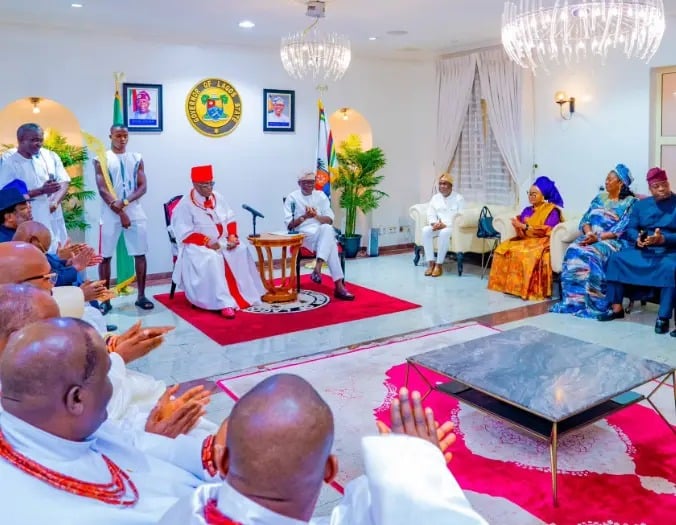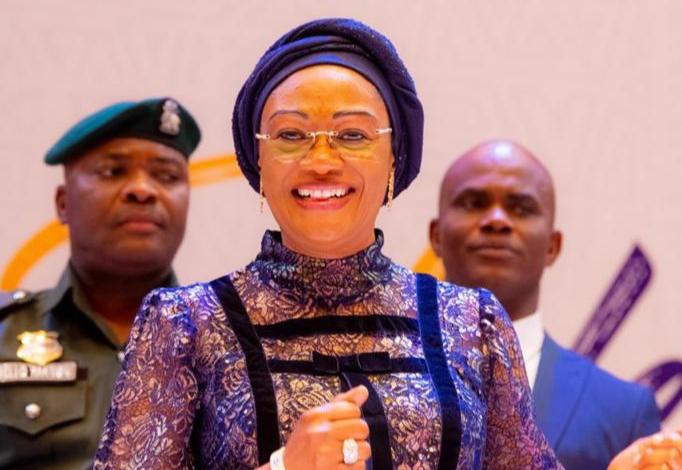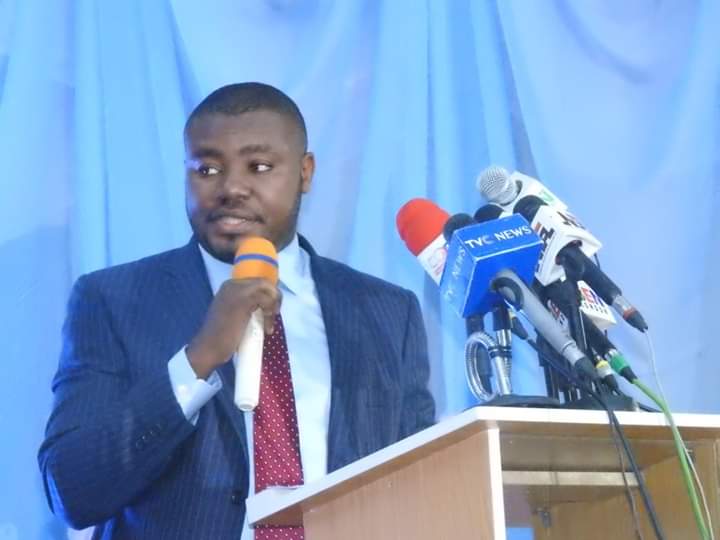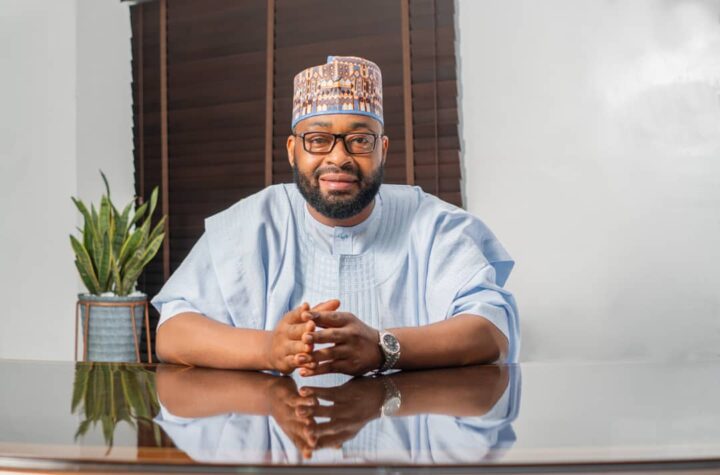BY ADEWALE ADEOYE
The distortion of history has led to wars between peoples and nations. It is exactly what we see between Israel and Palestine today and the main reason for the invasion of the Russian-speaking areas of Ukraine by Russia. Attempts to rewrite history partly were responsible for two bitter world wars. It is responsible for the conflict in the Middle Belt and many parts of Nigeria today.
A redefinition and distortion of a people’s history has a perilous impact on land, resources and spirituality. No leadership or a people should allow it to stand.
History sometimes is a pile of lies repeated over and over again but agreed by majority of the people.
Advertisement
Truth is constant but truth can sometimes be subjective depending on which side of the coin we find ourselves. But facts are constant even in the face of curious manipulations by man. Facts of history are like a cork, it bounces back as many times as it is submerged in water.
The debate on Lagos history will not recede so easily. Let us face it, the Oba of Benin, Ewuare 11 remains one of the most respected traditional rulers in Africa. His status in history remains like a rock. I admit.
However, his November 26 visit to Lagos was a conscious attempt to rewrite a 600-year-old history in his own image. The Oba while being hosted by the Governor of Lagos Babajide Sanwo-Olu, who at this time represents the cultural symbol of Lagos, said his host should check the history books that Lagos (or part of it) was founded by Benin. He did not mention the history book to be checked, because there was none.
Advertisement
We cannot say that the Oba of Benin lied, but we can take the liberty to say his account is not complete. We can at least seek the democratic space to let the highly respected Oba know that there are alternative positions, far older than his own recent thesis, based on indisputable facts of history.
The theory espoused by the Oba is a recent attempt to mythologise Lagos along the pathway of logic conceived by the new Benin royal. In the last 600 years, no history book has ever made reference to Lagos as the territory of Benin, nor the city’s royal stool in the context the Oba wanted us to believe. There are 52 traditional kingdoms in Lagos all of which have their history. Out of these 52, only the Oba of downtown Lagos (Eko, one of the smallest territories) has any relationship with Benin, and in reality, the network still goes back to Ile-Ife.
The current stool of the Oba of Bini, Ewuare II was created and nurtured between 1100 and 1300 by Oranmiyan, the descendant of Oduduwa, the first known King of Yoruba who had ruled at Ile-Ife around the 9th Century, some 300 years before his grandson established the Bini Kingdom.
The myth of Benin ownership of Lagos was first created during the visit of Oba Erediauwa of Benin when he visited Lagos in the pattern that followed the November visit of Oba Ewuare. In that year, Oba Erediuwa said Benin founded Lagos. The Oba of Lagos, Oba Rilwan Akiolu, responded by saying the Oba “made sense to him”. Amid criticisms from Lagos stakeholders, the Lagos Oba reversed his earlier claim. “I never said Bini owned Lagos, but the influence of the Oba of Benin, nobody can wash it away in Lagos,” Oba Akiolu said during the December 2017 launch of “Defend the Defenseless”, a book written by Arese Carrington, wife of a former US ambassador, Walter Carrington. The visit of the Oba Erediauwa marked the beginning of a new theory on Ekaladehan which some Bini people described in this century and for the first time as their own version of Oduduwa.
Advertisement
This is a very incoherent and distorted account of who Oduduwa was. Yoruba has a well-documented history dating back to the BC sustained and recorded over the years through written accounts by scholars and researchers all over the world and by Yoruba themselves in oral and written epistemology. The accounts are also recorded physically and spiritually in various Yoruba cosmologies. One of the most reliable and copious documentation of Yoruba history is found in Ifa which has 256 odus(books). Each odu has 800 stories.
The first chapter is Ejiogbe which has 800 stories, far bigger than any book of literature in the world.
There are in fact 204,800 theories/odu in all which is enough to fill a story building if produced as books.
The custodians of Yoruba epistemology know these verses and have kept them for centuries reflecting the history, culture, jurispudence and spirituality of the Yoruba people.
Advertisement
In his travels in Yorubaland, Clapperton affirmed the level of advancement in Yorubaland which he witnessed in the 1800s. He identified flourishing industries including smelting, manufacturing, weaving and spinning, dyeing, extracting oils, leather work, carving, pottery, etc.
He wrote: “The manufacturing of cloth I imagine to be as the nation itself. The cotton is first rubbed off the seed by a small iron roller on an oblong block; then beaten into a kind of lint and finally spun on a distaff for a spindle about nine inches in length, with a bulb about three or four inches from the larger end. This thread is sold in the markets, then dyed and warped on sticks placed in the ground for bars and finally put into the harness. The looms are of two varieties with all fixtures of an ordinary loom harness, sleight, treadle, shuttle, etc.’
Advertisement
The fact is that it is the deconstruction of Yoruba history led by Oba Erediuwa that his royal son, Oba Ewuare came to Lagos to strengthen.
Demystifying the Oba’s position is a very simple task. Until the proclamation of Oba Erediuwa, no history book has ever recorded Ekaladerhan as the father of Oranmiyan.
One of the most authoritative Benin historians, Jacob V Egharevba was assertive about the Ife origin of Oranmiyan. These accounts are well established in Egharevba’s ‘A Short History of Benin’.
Advertisement
He actually proclaimed the first king in the pre-Oba era, Ogiso as having migrated from Ile-Ife. The descendants of Ogiso family who are still alive have spoken proficiently on their own history in the past and even now to counter the emerging Beninisation of Yoruba history. There are many hard facts. It is important to note that Oduduwa was buried at Ile-Ife, his burial ground remains at Ile-Ife until this day, so also is the burial ground of Oranmiyan. In Yoruba and Benin time-honoured traditions, Ori Ade Kii Sun Oko – A prince or a king must never be buried outside his ancestral home. If Oduduwa and Oranmiyan were to come from Benin, why were they not buried in Benin?
They could not have been buried elsewhere except a place to which they were spiritually attached and entitled. Again, on the issue of Lagos, every account known to history asserts that the first people in Lagos were the Awori.
Advertisement
They left Ile-Ife around 1011 with an Ife prince, Ogunfunminire at the head of the team. This was long before the Benin dynasty was established. On their movement from Lagos, the Ifa had told them to settle anywhere the ‘Awo’ (calabash) in their stead, sank. It did at Isheri now in Lagos State prompting the team to settle on the vast land to be found in Lagos and Ogun state today.
The offspring of Ogunfunmire were involved in a rumble for the Oba’s stool. Ashipa, a Yoruba Awori whose son Ado became the Oba of Lagos was supported by the Benin royalty whose agents at that time were on frequent visits to Lagos. We should take not a significance event at this time. The title of Ashipa was indeed Oloriogun, captain of the battalion which was purely a Yoruba title.
The Oba of Benin also deployed soldiers to fortify the Ashipa Army while the Itsekiri were said to have provided the naval fighter force in support of Ashipa.
The Benin officers were led by Eletu Odibo who was a member of the Akarigbere class of Lagos White Cap Chiefs. Ashipa was believed to have lived between 1570 and 1630. He belonged to the Olofin ruling house, Ado his son lived and ruled Lagos between 1630 to 1669, Gabaro (1669-1704), Eletu Kekere(1704) who died in the year he was crowned, Akinsemoyin (1704-1749), Ologun Kutere(1773-1749), Adele Ajosun(1775-1780), Osinlokun (1780-1819).
At this time Lagos was punctured by political and administrative turmoil. For instance, Oba Ajosun was dethroned and died in 1837, so also was Akintoye who was dethroned but later came back to rule Lagos. A significant aspect often ignored was that there was no Oba of Lagos until 1630. That was 500 years after Oranmiyan had founded Benin and left the territory to establish the Oyo Empire. This meant that for 500 years, Lagos had no royal network with Benin whereas the Awori had lived, thrived and prospered on their land.
The other critical point to note is that the Benin soldiers that came to support Ashipa were accepted in Lagos obviously because they were descendants of Oranmiyan, and secondly because both Ogunfunmire, Ashipa and the first Oba of Benin came from Ile-Ife. It is also a known fact of history that ancient Oba of Benin were buried in the sanctuary of their forefathers in Ile-Ife. That tradition only changed not too long ago.
Recently, when the Ooni of Ife was hosting the Oba of Benin at the Ife Palace, he had told his guest that he was prepared to take him to where his ancestors were buried.
What are the reasons for the current misinterpretation of Lagos’ history? First I blame the political class and the mainstream Yoruba cultural fronts like the Afenifere leadership that emerged after Chief Obafemi Awolowo for their introverted political culture. For too long, unlike in the days of Awo, the ethnic and cultural groups outside Yorubaland, affiliated with Yoruba heritage have been ignored in all spheres, the ancient nexus severed, thereby widening the gap between generations of Edo and Yoruba people.
Lessons should be learnt from the practice of our forebears who consistently sustained and nurtured the relationship between Yoruba and their cultural and political frontiers.
For instance, at the formation of Egbe Omo Oduduwa in the 1940s branches emerged in Sokoto, Enugu, Bukuru, Gusau and Zaria. Iko Ekpene was the headquarters of the Egbe in Eastern Nigeria and Zaria in the North.
In February 1951 Chief Obafemi Awolowo led the visitation of the Egbe to Eastern Nigeria, they called on Azikiwe’s father at Onitsha who blessed them. They met the Obi of Onitsha who told them his ancestors came from Ile-Ife. Obi of Onitsha then donated to the Egbe’s Endowment fund. They met with Ozumba Mbadiwe at Aba who described the Yoruba as “the most constructive ethnic group” in Nigeria. He donated $10.10p to the Egbe. In Port Harcourt, J.N Odogu who led the Igbo State Union described the Egbe as “the most powerful organization in the country today.” The generation gap has led to isolation, then exclusion and now resistance.
The second reason is the failure of political leadership. There have been consistent plots to reduce the Yoruba heritage by breaking up its traditional homestead which began with the creation of Mid-West State in 1967 propelled not as a principle of self-determination but as a plot to factionalise the old Western Region. Sani Abacha’s regime later created the notion of regional blocs. Successive military governments fueled this position with the balkanisation of Yoruba territories into republican states which some Oba see as a window to assert themselves and delink from the ancestral brotherhood.
Again, the current political leaders in Yorubaland appear not to appreciate the fundamental link between politics, culture and history compared with Awolowo. For instance, there is no equivalent of the LOOBO (Lagos, Ondo, Oyo, Bendel and Oyo states) created during the era of Awolowo’s political dynasty. In fact the south-west state governors hardly hold regional meetings.
The situation continues to whittle down regional solidarity which existed in the past while promoting regional rivalry among state and non-state actors, including rivalry among traditional institutions of Yoruba ancestry. How many south-west state governors attended the coronation of the Olu of Warri in 2021? Only the then Ekiti state governor, Dr Kayode Fayemi, did. How many south-west state governors network with Togo and Benin Republic where there are millions of Yoruba indigenous people? None, but the governments of Sokoto, Bornu and Katsina are seen frequently signing MOUs with Chad, Niger and Mail due to the ancestral affinity between the peoples in those countries. They also show keen interest in the politics of those countries.
The Lagos state and other Yoruba State Governments have also failed to tell their own history allowing foreign interests to define their own past and present. This is dangerous. A conscious state leadership ought to produce and nurture the history of their people which should be a must-learn for every resident including children from Jelesimi (Kindergarten). This generation needs to be taught that 80 percent of today’s Lagos state were in Western Region controlled by Action Group, (AG) and that the industrial layout and modern upliftment of Lagos State saw its foundation under the AG. The Federal Government has made very little contribution to the growth of Lagos. The worst was to move the Federal Capital Territory without compensation paid to Lagos.
They need to know that Lagos was not the creation of Benin.
History is in short supply of authoritative references.
In the growth of African civilisation, the revolutionary years West Africa since 1800 by J.B Webster and A.A Boaten the links between Benin and Ife was reaffirmed with Ife as the source. In the book Peoples and Empires of West Africa, 1000-1800 by G.T Stride and Caroline Ifeka, the Ife origin of Bini crown was affirmed. On page 290, the authors stated that Oranmiyan ‘was unsuccessfully sent to Benin to establish a monarchy that would resolve the internal struggles of this republican village.” He married a Princess of the former dynasty (Ogiso) and once his son was recognised as de facto leader of Benin, he left.Before Oranmiyan, there was Obagodo who was the first Ogiso and later Owodo.
Oranmiyan married the son of the Chief of Ego and bore Eweka who became the first Oba of Benin. Before leaving Benin, Oranmiyan called the Chiefs and told them he was leaving, describing the place as ‘land of vexation’, Ile Ibinu in Yoruba from where the word Bini was fetched. In recent times, this has been distorted by a new invention of anti-history that claims Benin was a word given by the Portuguese.
Descendants of Oranmiyan who ruled Benin did not fight any war in Yorubaland even as they extended their control to some Yoruba territories.
For instance, Oba Ozolua (1481-1504) extended his boundaries to Ekiti and Ijebu. In fact, while the Yoruba were already known for wars of conquests using guns, the first gun only arrived in Benin in 1690. The Benin Kingdom thrived as a global commercial hub in from 1200s.
For instance, Oba of Benin, Okolua’s reign saw the visit of the Portuguese Afonso d’ Aveira in 1485-1486 who returned to Lisbon with the Chief of Ugboton who was Benin’s ambassador in Portugal. The Chief later came back to set up a flourishing business. Aveira came again during the reign of Oba Esigie who asked him to become a Christian. Again, Oba Esigie sent the Chief of Ughoton as the ambassador was sent to meet the King of Portugal. The King of Portugal then sent missionaries and presents.
Let it be known that no one can take away the recorded history of Yoruba civilisation. It is certain that was not what the highly respected Oba of Benin attempted to do. Putting the records straight is in the interest of generations of both Benin and Yoruba people, who should see themselves blood bound, work together and unite for the prosperity of the land of their forefathers.






